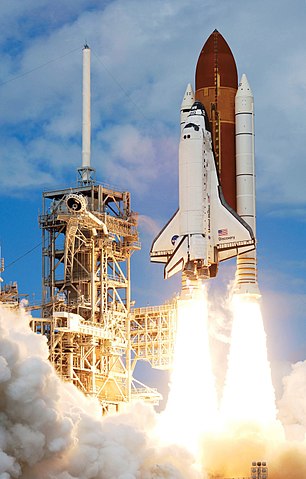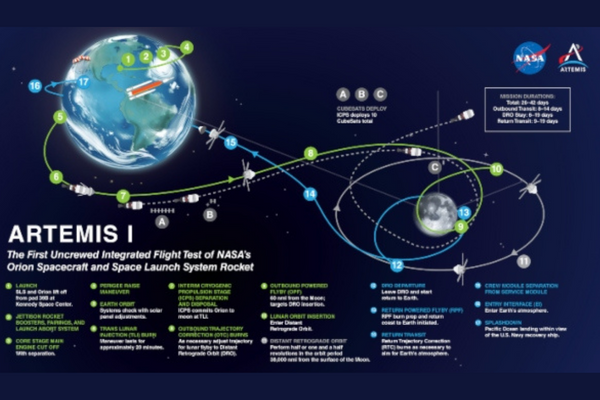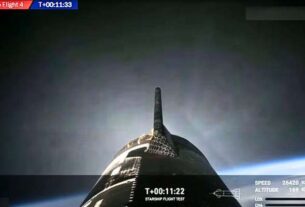NASA undertakes a second attempt to launch its Space Launch System (SLS) rocket at 2:17 p.m. EDT Saturday, Sept. 3, from Kennedy Space Center. There is a two-hour window for launch. The Artemis 1 launch kicks off NASA’s program to send the first woman and first person of color to the moon.
Artemis 1 Testing and Observation prior to first launch date of Aug 29
Tests that were conducted before the scheduled launch date showed technicians may have fixed the hydrogen leak in the tail service mast umbilical. This test observation resulted in NASA’s advance decision to halt Monday’s first launch schedule of the Artemis 1, said Jeremy Parsons-deputy program manager at the space center.

Charlie Blackwell-Thompson, Artemis launch director, said technicians used the experience from a similar issue during an earlier wet dress rehearsal to fix the leak. The problem appeared to be a pressure sensor that had come loose. Workers replaced the seal and tightened it. “We think that’s most likely the source of the leak, since other possible sources seemed normal. Until you hit it with cryo, you don’t know for sure.” charlie said.
The Aborted First Schedule Launch of Artemis 1 on 29 August, 2022
The first attempt to lift off the mega moon rocket from the historic launch pad 39B at Kennedy Space Center failed due to technical problems. The second launch attempt for Artemis was planned for Sep 3, 2022.
Report On Artemis 1 Planned Second Launch Attempt of Sep 3, 2022
In NASA’s second launch attempt of Artemis 1 on Sep 3, engineers saw a leak in a cavity between the ground side and rocket side plates surrounding an 8-inch line used to fill and drain liquid hydrogen from the SLS rocket. Three attempts at reseating the seal were unsuccessful. The Pre-launch tests include an early phase of hydrogen loading operation called chilldown. In this operation, launch controllers first cool down the lines and propulsion system. This is followed by flowing of super-cold liquid hydrogen into the rocket’s tank at -423 degrees F. It was during this operation that an inadvertent command was sent that temporarily raised the pressure in the system.
While the rocket remained safe but it was too early to tell whether the bump in pressurization contributed to the cause of the leaky seal. Engineers were examining the issue.
Though the next window for the launch of Artemis 1 starts on 20 September 2022 but the launch may not be possible until October 2022.
All About NASAs Artemis Program
The Artemis program is the successor to the space agency’s Apollo lunar missions more than half a century ago.
NASA’s Artemis program kicks with the launch of Artemis 1 and ends with the final lap launch of Artemis 3. Artemis 3 will land the first woman and first person of color on the Moon. In this final lap of the Artemis mission, Artemis 3 will explore more of the lunar surface than ever before. For the Artemis program, NASA is collaborating with commercial and international partners. The goal of the mission is to establish the first long-term presence on the Moon. Lessons learned from the success of Artemis 1 will be used to take the next big step: sending the first astronauts to Mars.
All About Artemis 1 Launch and Mission
Artemis 1, which was officially named Artemis I, is a planned unmanned mission to orbit the Moon.
Artemis 1 will lift off from Launch Complex 39B at the Kennedy Space Center aboard the Space Launch System(SLS) rocket. This launch will have the Orion spacecraft on a mission ranging anywhere between 26 and 42 days. On at least six of these days, the Orion spacecraft will be in a distant retrograde orbit around the Moon. Upon reaching orbit and performing a trans-lunar injection (burn to the Moon), the mission will also deploy ten CubeSat satellites. The Orion spacecraft will then return to Earth. The success of the Artemis 1 mission will allow Orion and the Space Launch System for crewed flights beginning with Artemis 2.
What’s Unique About this Artemis 1 Launch
Artemis program is NASA’s first spaceflight of the Space Launch System (SLS) rocket and also of the complete Orion spacecraft.
The Orion spacecraft used for Artemis 1 is the first super-heavy-lift vehicle since the last Saturn V launch. This Orion spacecraft is also stacked in the Vehicle Assembly Building (VAB) at NASA.
The success of NASA’s Artemis Program that kicks off with the launch of Artemis 1 is anxiously awaited by the whole world.
Informative Useful Links




